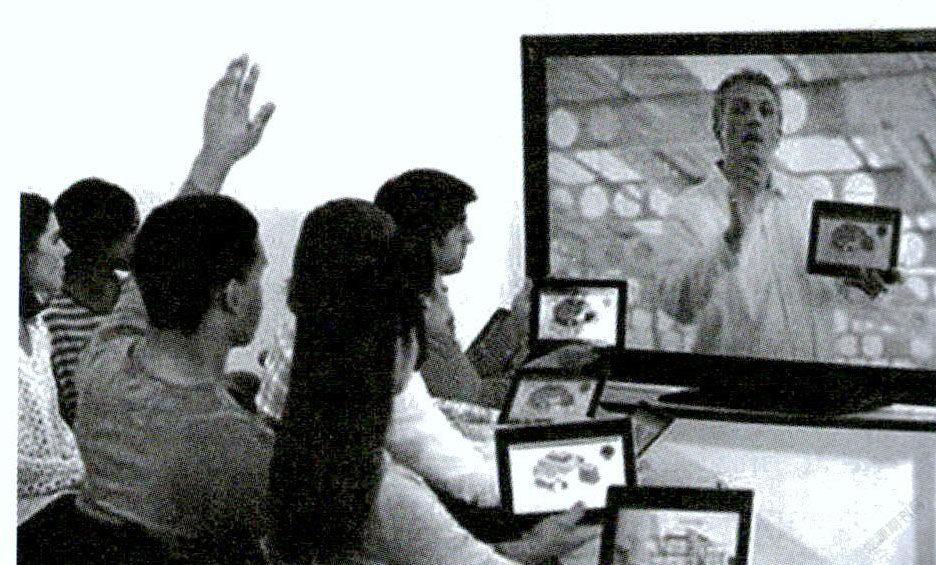The “News” in Education
肖捷

Education changes with time. Because of these changes, the face of education and access to education are different today. The most obvious change is that there are different things to teach. In fact, there is much more to teach. Learning and research have increased greatly in the past century. Great advances in science mean that there is much more information to teach. Some of the ideas of the past were wrong, so the content of books is different. For example, in a beginning biology class today, more than 70% of the information that students learn today was not known twenty years ago. Thats an important reason for change! As scientists learn more, there will be more for students to learn.
Another reason for changes in education is that there are new teaching tools. For centuries, schools had no books. The teachers gave lessons explaining ideas to students. Today teachers and students use books, including
e-books. They also use technology. For example, many of them use computers, video, and on-line communication. There are even electronic classrooms. Through interactive instructional television networks (IITV), a teacher can teach students in different places. Their IITV classrooms use radio signals or satellite communication to carry the communication from tower to tower.
There are differences between the traditional classroom and the IITV classroom, of course. However, most of these differences are easy to overcome. Perhaps one student wants to have a private conversation with the teacher. If teacher and student talk on the IITV network, there is no privacy. Everyone else in the class can hear what they say. Therefore, their conversation must happen over telephone lines or through electronic mail(e-mail).
No one really knows how this change in students ability to talk privately with a teacher changes the educational experience. Some students decide not to talk to the teacher because it cannot happen naturally after class. She could send an e-mail message or decide not to bother the teacher. This lack of personal contact with the teacher is just one potential problem. Another is that the students in different classroom places cannot speak with one another as easily. One solution to this drawback is the class chat room, To facilitate (make possible, make easier) students con-versation about a topic, the teacher can set up an Internet chat room or a bulletin board. A number of general topics are posted, and the students can write in their thoughts on the topic. Some students are shy of using these kinds of communication tools. Perhaps they dont have access to the equipment, or maybe they dont know how to get to a chat room on the Internet. Communication among students is possible, but it takes through a medium that is different from voices in a classroom.
On the other hand, there are great advantages to teaching through IITV. Great numbers of students can “attend” the class. Education is not limited to those who are near a university. Another advantage is the ability to show things to students. Every IITV classroom has a padcam. This special camera focuses on any picture, book page, or object that the teacher wants the students to see. The camera focuses on a rectangle—the pad. A teacher can put a picture, for example, on the pad of the padcam. The padcam has a zoom lens. Therefore, the teacher can focus on tiny things in the picture and make them much bigger than life. Art history teachers and anthropologists love the padcam. They use it to make their lessons more interesting. They can show details with ease.
Computer programs such as Power Point connect easily to the electronic equipment in interactive television. Therefore, the presentation of ideas can happen quite well. The teacher can put the main ideas on the screen, so the students know what the main ideas of the lesson are. Another advantage is the ability to include videos in lessons. It is easy to show movies or parts of cinemas. Furthermore, there can be a videotape record of every lesson. A student who misses a class can watch the tape. Then he knows exactly what happened in class.
Students change from generation to generation. The students of today learn in different ways from their grandparents forty years ago or their parents twenty years ago. Todays students grew up under different conditions. Most of them have always had electricity. Perhaps they have always had television. They grew up with technology. The things that a person has always known seem natural to him or her. Of course, there is always change. Changes in society happen slowly, one at a time. Theretore, people usually accept changes as natural. For older people, the changes today seem to happen very fast. They find it more difficult to keep up with the changes. Younger students are used to a faster speed of living. They accept the speed as something natural.
The new technology, the change in personality of students, and the changes in content all affect education today. Schools look different, teachers do different kinds of teaching, and students learn different things. It is impossible to tell how education will change in the next generation. One cannot be sure of anything—except that it will change.
Answer the questions.
1. What are the three new aspects of education?
2. Which of these statements are probable true about IITV?
A. IITV is expensive.
B. IITV is easy to set up and run.
C. IITV could exist without computers.
D. IITV gives a teacher a lot of advantages.
E. IITV can help every person in every country to learn more.
(Key ? p. 37)

